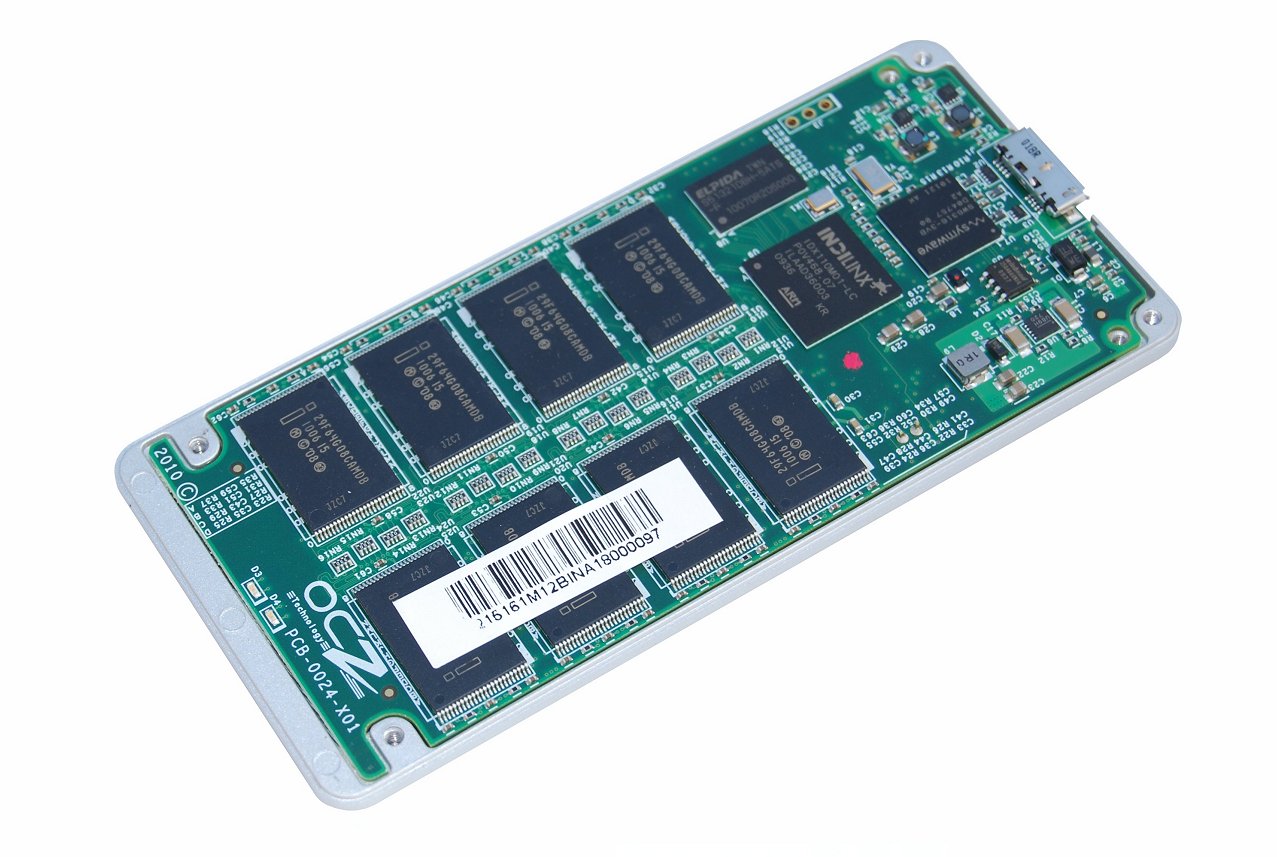OCZ Enyo Cracking it Open
So we now know what the Enyo looks like from the outside, but what lurks beneath that shiny exterior? In true TechSpot fashion we are going to strip it down, exposing the naked PCB to discover just what it is that makes the Enyo tick.


Under the hood we found that the Enyo is driven by the Indilinx 'Barefoot' controller with the standard 64MB cache. This is of course the very same controller that was made famous by the original OCZ Vertex series and was later adopted by the more affordable Agility as well. While we were somewhat surprised to find the Indilinx Barefoot controller inside the Enyo now that OCZ is using SandForce chips on more and more products, the choice actually makes perfect sense.

The Barefoot is a tried and true SSD controller that delivers excellent performance while also providing maximum storage, and it does so at a reasonable price – at least as far as SSD technology as a whole is concerned. In fact, we were probably more surprised by the choice due to the high esteem that we hold the Barefoot in.

Also found on the PCB are a number of Intel "29F64G08CAMD8" 32nm NAND flash memory chips, along with the 64MB cache memory chip from Elpida and a USB 3.0 to SATA controller chip from Symwave. The Symwave SW6315 is designed for use in external storage devices and it's what enables the Enyo to easily outperform any product designed to use the USB 2.0 bus. To put things into perspective, where a typical USB 2.0 drive would take a painstakingly long 9 minutes to transfer 16GB worth of data, this external storage device stands to do it in under a minute.

As the most dominant interface for PCs and consumer products, more than 10 billion USB ports shipped in 2009. Leveraging the ubiquity and commonality of USB in today's consumer devices, the USB-IF released the complete specification for SuperSpeed USB 3.0 on November 17, 2008. The latest revision of the standard offers a theoretical 5Gbps (10x increase) transfer rate and several "green" improvements, including better power management, lower PC processor burden and lower total operational power, all while maintaining backwards compatibility with legacy ports.
